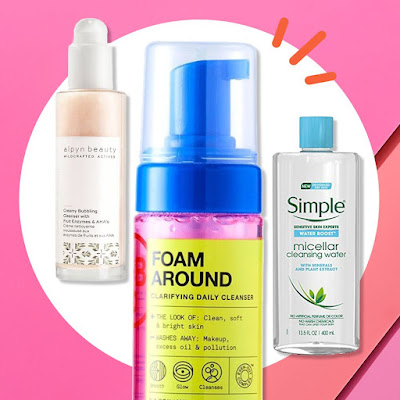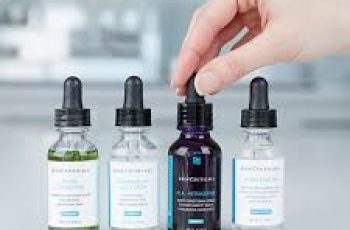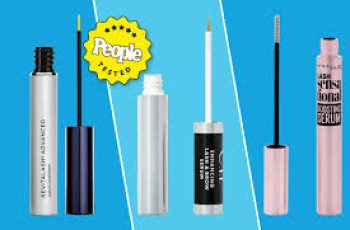
What is the difference between Australian pink clay and French pink clay?
Clay masks are the one product without which an at-home spa night would be meaningless! Clay masks are a must-have for pampering your skin, and their popularity dates back centuries, no, literally centuries. Back in 80 BC in ancient Egypt, Queen Cleopatra created a mask made of white clay, milk, honey, and olive oil. She applied it all over her body to restore youth and radiance to her skin. In the modern century, our love for these masks has not faded, although today we mostly limit them to our faces.
In 2017, clay masks, especially those made of pink clay, have been rising in popularity. But there is more to these Instagram-worthy products that are popular among millennials. The benefits of pink clay are particularly impressive, and every skin type can use it very comfortably. Compared to other clay masks that can be very drying for sensitive skin, pink clay is gentler and has more of a softening effect on clogged pores, rather than sucking out dirt like other masks do. Pink clay deep cleanses the skin without affecting the skin’s natural oils.
What is pink clay?
Pink clay is a type of clay called kaolin. Kaolin is usually white and takes on a pink hue depending on the iron oxide content. The higher the ratio, the darker the kaolin tone. The clay also becomes more absorbent. Kaolin comes in different shades, from red to white. Red is great for oily skin types, and white can be mixed into a variety of mask formulas to provide a soothing effect. Pink is somewhere in between, providing a deep pore cleansing effect while keeping the skin balanced and comfortable.
Skincare Benefits of Pink Clay
Pink clay is suitable for all skin types, especially sensitive and dry skin. It is rich in minerals and locks in moisture, removes impurities, helps regenerate and hydrate the skin, while its slightly grainy texture gently exfoliates the skin to reveal a radiant complexion.
For dry and sensitive skin types, pink clay blocks any irritation and inflammation while promoting healthy cell turnover, thereby addressing dry skin issues such as dry, flaky patches on the skin and making the skin appear brighter and smoother. Another reason why pink clay is perfect for dry skin types is that the clay does not strip the skin of its natural oils, thus keeping the skin balanced and comfortable.
Dehydrated skin will also notice that the skin feels plumper and more radiant with the help of pink clay, which can be a difficult task in cold temperatures. Luckily, pink clay protects the outer layer of the skin from environmental influences such as weather and pollution.
Oily skin will experience a completely different range of results when using pink clay. Don’t be fooled by the mild effects of this clay on sensitive skin, it is actually gentle but effective. Congested, acne-prone skin will notice tightened pores, reduced blackheads and blemishes, and no signs of irritation leading to further breakouts.
Toxic air and pollution are at their highest levels since 2010, so using a pink clay mask at least once a week will keep your skin as healthy as possible. This explains why we’ve doubled the number of people using detoxifying masks. We’ve all had blackheads, blemishes, or enlarged pores at one time or another, and using a 10-minute clay mask can easily combat these issues with its powerful, deep cleansing capabilities, clearing away dirt, grime, oil, and even makeup from you and your pores. Use the cleanser to remove any residue you missed! Once all the grime is gone, you’ll notice a smoother texture on your face, impurities removed, and vibrant skin.
Masks and treatments for acne and pimples are often too harsh on the skin. In order to achieve the desired “squeaky clean” feeling, every last drop of oil is removed from the skin. This causes the skin to compensate and produce excess oil, which over time can lead to, yes, you guessed it, breakouts and acne. Opting for a gentler, yet more effective approach will leave the skin’s natural barrier, pH, and sebum production undisturbed and at their healthiest.
As the title of this article suggests, there are different types of pink clay. In the next section, I’ll take the time to explain the difference between Australian and French pink clay explained.
What’s the difference?
Well, as the names suggest, both clays are harvested in different regions. Geographically, this means they contain different minerals and may have slightly different effects on the skin.
French Pink
Minerals found in pink clay are iron, illite, montmorillonite, and calcite.
Illite is great for acne-prone skin because it unclogs clogged pores. It also stimulates blood circulation, making the skin look tighter and more youthful.
Montmorillonite is super absorbent and gently removes excess oil from the skin without completely degreasing it.
Finally, there’s calcite, a crystal that’s said to be great for energy cleansing, which in my opinion is exactly what should be included in a soothing clay mask. It draws out toxins, gently exfoliates, and removes dead skin cells that make the skin look dull. It boosts blood circulation and rejuvenates the skin.
French pink clay from the south of France has been used exclusively in spas for luxurious treatments for years, which explains why home skincare products are often more likely to contain Australian pink clay, but its popularity has begun to gain some momentum as more brands choose French pink clay.
Australian Pink Clay
Australian pink clay contains a very different combination of minerals: silica, magnesium, selenium and zinc.
Silica is a natural anti-inflammatory that locks in moisture, which explains why pink clay is perfect for dry and eczema-prone skin types. Magnesium helps the skin retain its natural fatty acids, which is great for keeping your face looking youthful and plump. Selenium is a great antioxidant that neutralizes any harmful free radicals that damage the skin’s natural barrier. Finally, zinc works wonderfully healingly on the skin, treating any blemishes and making them less noticeable, which also makes pink clay a great skincare treatment for mature skin.
Produced in a specific region of Australia, this clay is rich in plant extracts and minerals that work together to shrink pores, detoxify polluted skin, and remove impurities. Due to the purity of the clay, it’s soft yet highly resistant to oil and shine.
French or Australian pink clay is rich in minerals and extracts that fight free radicals to provide the best possible care for our skin. Given the many aggressors we face every day, using this millennial pink product will help your skin return to its healthiest state while also giving you that luxurious pampering factor!
Don’t miss out on more skincare tips and expert advice on our YouTube channel! Click the Subscribe button to visit our green couch. You won’t regret it!


